Ballymurphy inquest: Ex-soldier says what he saw was 'murder'
- Published
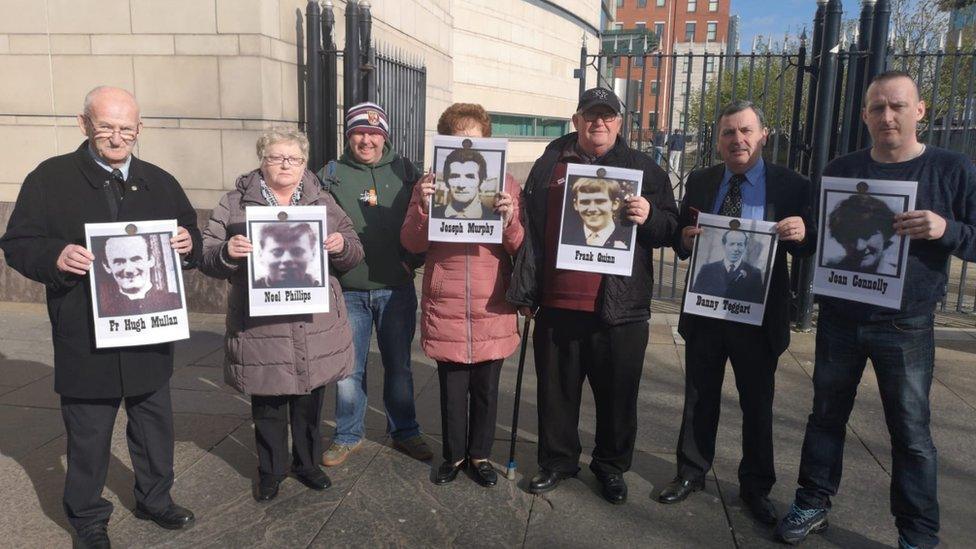
The inquest is examining the deaths in west Belfast in August 1971
A former soldier has told the Ballymurphy inquest that what he saw was "murder".
C4 had previously told the court that he saw British soldiers with red berets shooting and killing two men close to Springfield Park in August 1971.
He believed that the soldiers were from the Parachute Regiment.
The inquest is looking into the shooting dead of 10 people in the Ballymurphy area of west Belfast in August 1971.
The shootings occurred amid disturbances sparked by the introduction of internment without trial in Northern Ireland.
C4 told the court on Tuesday that he was present during the incident where Fr Hugh Mullan and Francis Quinn were shot and killed on waste ground near Springfield Park.
C4, originally from England, was in Belfast at the time visiting his wife and family while on pre-discharge leave from the Royal Corps of Signals.
Returning to give evidence on Wednesday, he told the coroner: "What I saw in my mind was murder. Shooting civilians who weren't involved in any terrorist action."
Asked by the coroner why he had come forward in 1971 to speak out about what had happened, he replied: "People needed their justice."
Earlier, a barrister for the MoD (Ministry of Defence) had resumed questions about the differences in some of C4's several accounts of what happened.
In one earlier statement given in 2009, C4 had said he could not see the colour of the berets worn by the soldiers who shot at them from the roofs of Springmartin flats.
He now says he is certain he saw red or maroon berets on the two men.

Soldiers from the Parachute Regiment were based at Henry Taggart Army base
Asked why he had said that, he told the court he was not sure of his frame of mind while giving that 2009 statement.
There were also some differences in his description of the order in which things happened and exactly who was present.
Later, a barrister for the Mullan and Quinn families indicated that other witnesses to the inquest in previous weeks had referred to the presence of a man, with an English accent, a soldier, who was married to a local woman.
C4 agreed that this would have been him.
He was also questioned about his claim that a captain in the Parachute Regiment came up to him at the inquest in 1972 into the death of Fr Hugh Mullan and called him a traitor.
The former soldier told the court that his home had later been visited by three members of the Parachute Regiment who had physically assaulted him.
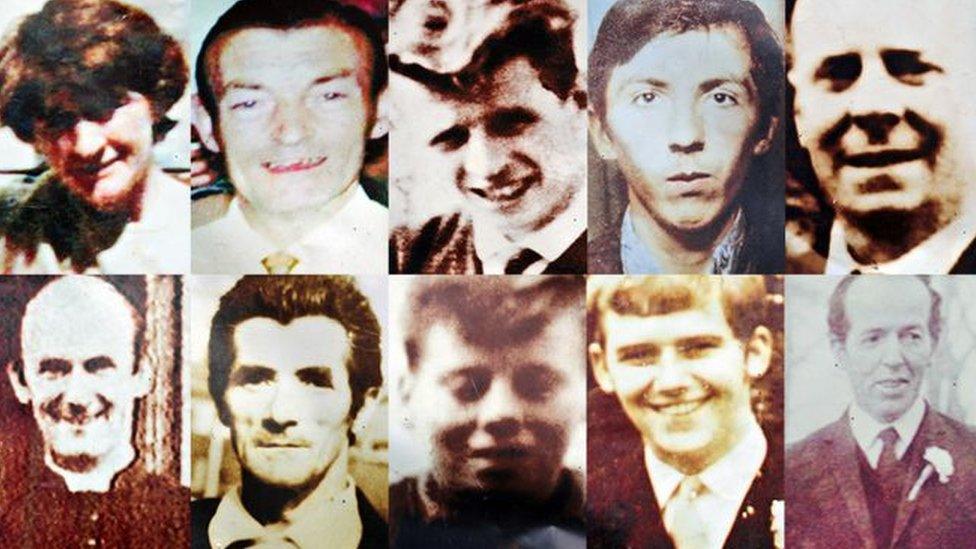
Ten people were killed in the shootings
He described making a complaint about the matter to the military authorities.
He had earlier said in court that he thought the three soldiers had subsequently been court-martialled, but now said he could not be certain anything had actually happened as a result of his complaint.
C4, now 71, agreed with the court that his memory sometimes failed him, but he was doing his best to give "an honest and truthful account". He has completed his evidence.
Witness M282
Later on Wednesday, a former paratrooper told the inquest how he crawled through a field in darkness and found the bodies of a man and a woman.
Witness M282 was a private in B Company, 2 Para and was based at Vere Foster school just off the Springfield Road.
M282 said he heard exchanges of gunfire and although he took cover for a time, he had not fired his own weapon.
He told the court that after dark, he and another soldier were given the task of discovering if there were any casualties in the Manse field area, opposite the Henry Taggart Hall.
M282 said both of them made a hole in the fence in front of the base and crawled through.
He said they then crawled over to the waste ground without carrying any weapons with them.
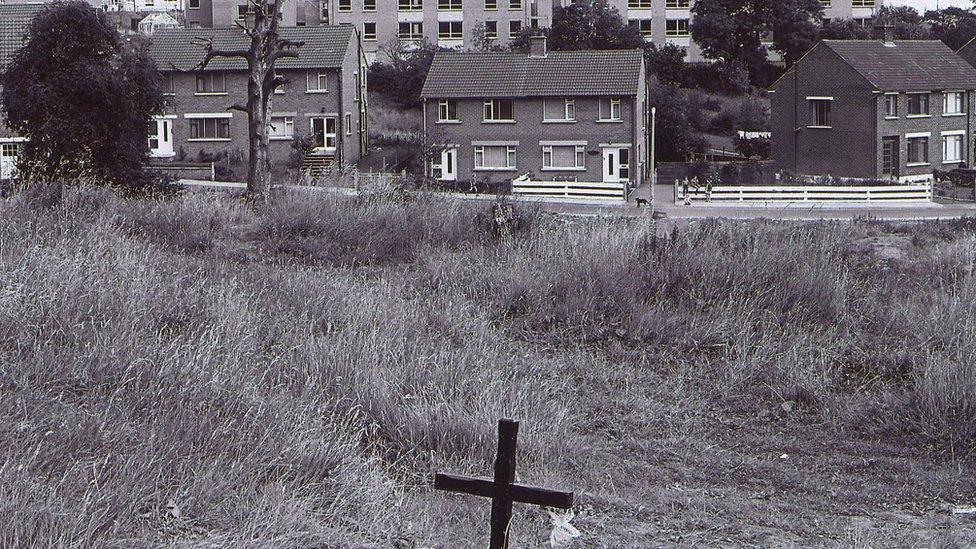
The shootings occurred amid disturbances sparked by the introduction of internment without trial in Northern Ireland
He said he was afraid of being shot, but searched on one side of the Manse area, discovering the bodies of a woman and a man.
Four people died as a result of the shooting in that area: Joan Connolly, Joseph Murphy, Noel Phillips and Daniel Teggart.
The former soldier said he knew the woman was dead because the body was cold.
He said he didn't discover any weapons or shell cases at the scene.
He said the soldier with him had discovered two or three bodies, but that he had not seen what his colleague was doing.
M282 said the two men waited while an armoured vehicle came from the base and four soldiers collected casualties from the field, before they went back themselves.
He did not see any dead or wounded back at the base, he said.
He said that at a later date he discovered some weathered rifle shell cases in the hedge along the waste ground, but cannot be sure of the date when he found them.
He said he did not connect the shell cases with the bodies he had found several months earlier.
He also said he did not recognise the type of shell cases, but they were not the type that the Army used.
- Published2 April 2019
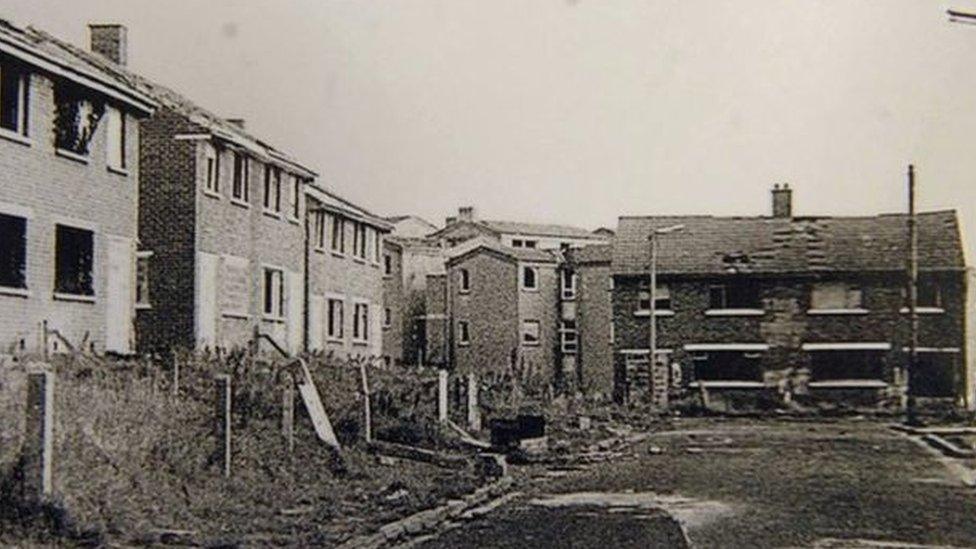
- Published25 February 2019

- Published14 February 2019
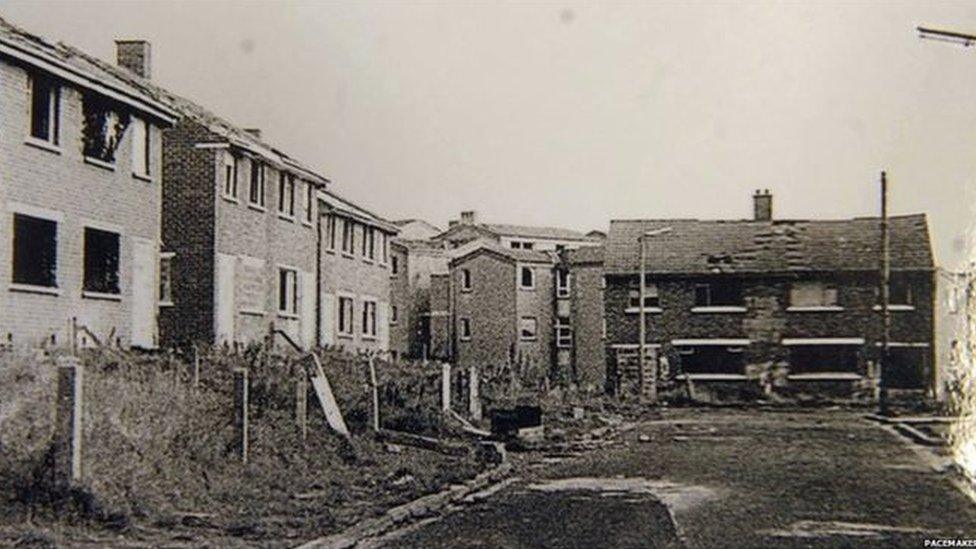
- Published13 February 2019
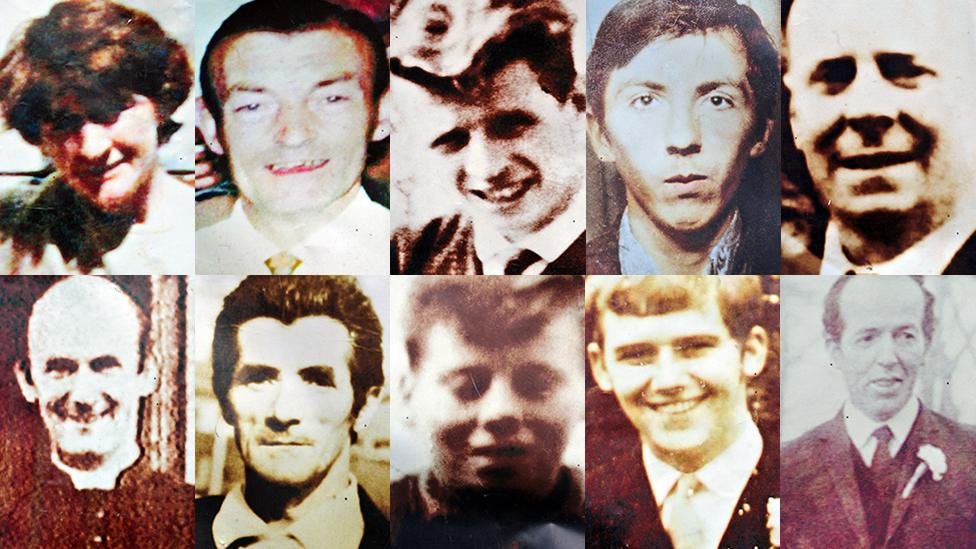
- Published12 February 2019
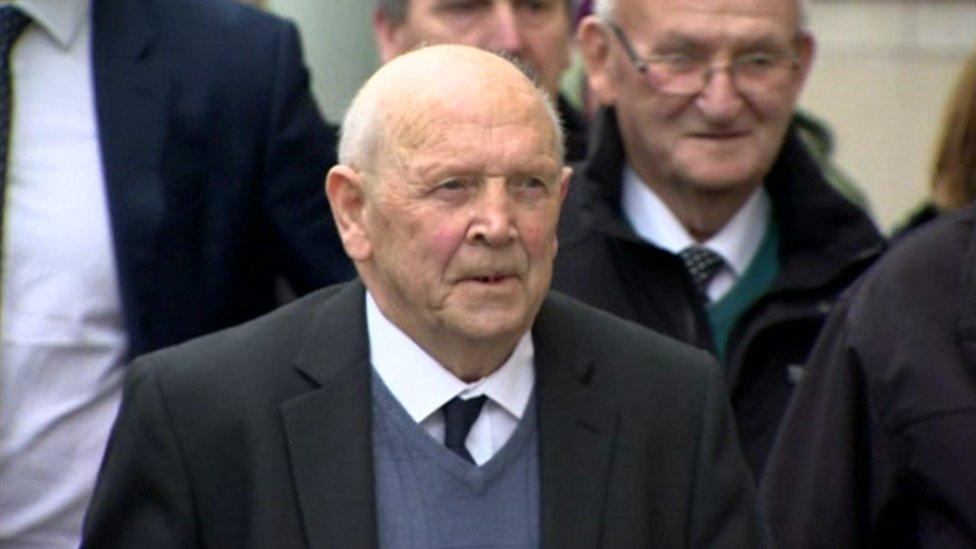
- Published11 May 2021
